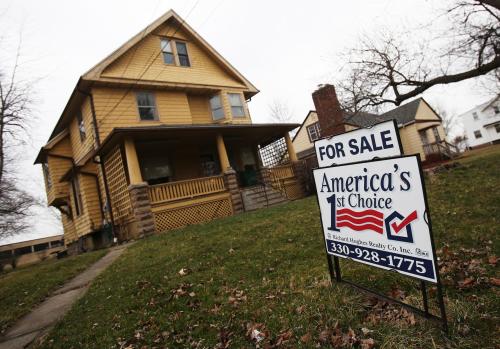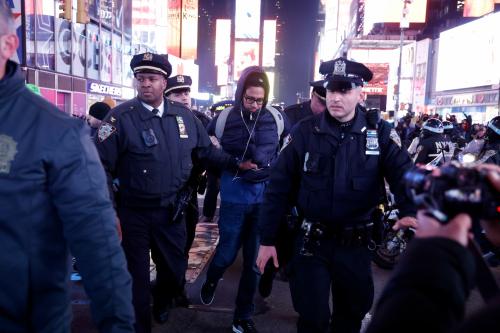Environmental justice (EJ) in the U.S. has become a sociopolitical challenge to pursue a movement that counters environmental injustices that threaten the viability of many communities. The Environmental Protection Agency (EPA) defines environmental justice as “the just treatment and meaningful involvement of all people, regardless of income, race, color, national origin, Tribal affiliation, or disability, in agency decision-making and other Federal activities that affect human health and the environment.” We can categorize environmental injustices based on their physical impact and social or community impact. Physically, when populations are targeted by developments such as highways, schools, businesses, and housing developments, they are relocated or displaced. These social or community changes lead to a loss of social cohesion, social capital, and can lead to social isolation. Their combined effects can relocate social challenges such as poverty, job access, health care access, and school overcrowding to other geographic communities. Some of the other challenges can come in the form of pollution which exposes communities to new public health risks, therefore contributing to broader and localized climate change.
There are many tools that can be applied to explain the impact of environmental injustice on various segments of the population. One approach is to use critical race theory (CRT) which offers a powerful lens to understand how policies and laws are applied unequally, dislocating and disrupting communities of color. By examining how race and power structures influence where polluting facilities are located and environmental policies are crafted, CRT sheds light on the roots of environmental injustice and paves the way for solutions that promote a cleaner, more equitable future for all. The integration of CRT in environmental policymaking not only exposes these injustices but also guides the development of solutions that foster a sustainable and just society. Specifically, we propose that policymakers prioritize the voices and needs of marginalized communities through CRT-informed legislation, which could include stricter zoning regulations, enhanced environmental protections, and increased investment in community-led environmental justice initiatives. By doing so, we can work toward dismantling the structures that perpetuate environmental racism and ensure that all communities have equitable access to a healthy environment.
A brief history of environmental justice and environmental racism
Following the 19th century, a modern environmental movement emerged, taking different social routes and policy objectives than the conservation movement prior. The conservation movement focused on preserving the planet, but a crucial aspect began to gain traction following a momentous spark during the Warren County polychlorinated biphenyls (PCBs) protest: environmental justice.
Environmental injustices are produced by policies and regulations that lead to neighborhoods and communities being polluted, seized, and displaced. There are many historical factors that embody early American policies and American racism that have supported colonization. American colonization paved the way for the exploitation of Indigenous American lands and the forced relocation westward of the groups that inhabited them. Additionally, colonization laid the groundwork for an agrarian economy fueled by enslaving Africans. Dr. Robert Bullard, a scholar and leader in the EJ movement, categorizes this history as environmental racism or “any policy, practice or directive that differentially or disadvantages (whether intended or unintended) individuals, groups or communities based on race or color.”
An environmental racism framework recognizes that people of color and low-income communities disproportionately bear the brunt of pollution and environmental degradation. Environmental justice seeks to address these inequities by advocating for policies and practices that ensure all communities have equal protection from environmental hazards and equitable access to resources and decision-making processes.
Despite legislative advancements in Congress, such as the Civil Rights Act of 1964 and the Clean Air Act of 1970, environmental injustices persist in insidious forms, underscoring the enduring legacy of racialized marginalization. The construction of toxic waste facilities in predominantly Black and brown neighborhoods—commonly referred to as “environmental racism” —exemplifies how structural inequalities intersect with environmental decision-making processes. Moreover, the unequal distribution of resources for climate adaptation and disaster relief exacerbates vulnerabilities in marginalized communities, amplifying the disproportionate impacts of environmental hazards.
Critical Race Theory (CRT) and remedies for environmental racism
CRT is an academic framework, typically taught in law schools, that examines the intersection of race and racism within politics, culture, and law. Emerging in the late 1970s and early 1980s, CRT posits that racism is not merely the product of individual bias or prejudice but is embedded in legal systems and structures, as described in the scholarship of American legal scholars. CRT helps to explain why policies and legal strategies have been used to expose communities of color to polluted landscapes and why predominantly white, affluent neighborhoods benefit from environmental protections and amenities. Communities of color and lower-income communities often find themselves without the same levels of political capital compared to white and affluent communities, contributing to the concentration of many sources of pollution (e.g., manufacturing waste, hog farms, municipal landfills, etc.).
Recognizing the role of legal strategies and policies is critical to understanding how environmental racism operates. For example, zoning regulations and redlining practices systemically confined Black and Latino communities to areas with high levels of pollution, perpetuating cycles of environmental harm and socioeconomic disenfranchisement. The Biden White House reported that “many lower-income, predominantly minority neighborhoods in cities have become ‘heat islands,’” causing them to experience “higher temperatures than other neighborhoods in the same metropolitan area.” Due to a lack of trees and more concrete infrastructure, communities of color experience heat waves at a higher rate than surrounding suburban communities. These conditions could affect increases in “energy costs (e.g., for air conditioning), air pollution levels, and heat-related illness and mortality.”
The politics of environmental racism and CRT
In states like Florida, CRT has sparked intense debate among those who do not see the framework in the same light as its forebearers. Conservative critics argue that CRT promotes a divisive view of American history and teaches students to focus primarily on race, suggesting that the United States is fundamentally racist. Some also argue that CRT indoctrinates and politicizes K-12 education despite its primary presence in law schools. In response, several conservative states have introduced or passed legislation to restrict or ban the teaching of CRT in public schools, such as Florida’s “STOP W.O.K.E Act.” In his reelection campaign, Trump has promised to cut federal funding from schools promoting: “critical race theory,” “transgender insanity,” or “any other inappropriate racial, sexual, or political content on our children.” The message is noticeably clear: Emerging and developing social identities do not matter and are not the business of schools. The result of these threats is the removal of educators, counselors, and other school staff that are responsible for the education of young people, many of whom are experiencing a range of social, emotional, physical, economic, and family challenges that are being framed under CRT and diversity, equity, and inclusion (DEI).
CRT supporters argue that excluding discussions of race from curricula perpetuates historical injustices and hinders understanding of environmental and social inequities. As students grow up in this world, environmental educators believe that CRT provides essential insights into understanding and addressing environmental injustice, which often stems from systemic racism and discriminatory policies. In a time when climate change poses significant health risks and exacerbates existing inequalities, teaching CRT can empower young scholars to critically analyze and tackle these pressing issues, promoting initiatives advocating for a more just and equitable society. A broader understanding of climate, environment, and land use issues may also inspire and encourage young people into the STEAM fields and begin offering innovative solutions to these global challenges. Climate change can become an important concern for youth as they come of voting age. Their understanding of broader environmental concerns such as conservation and how policies shape land use, urban development, and urban sprawl may influence their vote.
The remedies to combat environmental racism
Under the Obama and Biden administrations, climate change policies have seen significant advancements, focusing on reducing emissions, promoting clean energy, and addressing environmental justice. The Obama administration’s Climate Action Plan included the Clean Power Plan to reduce carbon emissions from power plants by 32% from 2005 to 2030, promoted renewable energy development, implemented higher fuel efficiency standards for vehicles, and played a key role in the adoption of the 2015 Paris Agreement. Efforts to address environmental justice included the EJ 2020 Action Agenda and strengthening the Interagency Working Group on Environmental Justice to integrate these concerns across federal agencies. The Biden administration has continued and expanded these efforts with initiatives such as the American Jobs Plan, the Bipartisan Infrastructure Law, and the Inflation Reduction Act, which include substantial investments in clean energy and climate resilience. Biden also made a concerted effort to rejoin the Paris Agreement and launched the Justice40 Initiative, aiming to deliver 40% of federal investment benefits to disadvantaged communities. The establishment of the White House Environmental Justice Advisory Council and a focus on supporting communities most affected by climate change further emphasize Biden’s commitment to environmental justice. Both administrations have worked to address environmental racism and promote environmental justice, with the Biden administration taking a more robust approach to ensure that the benefits of climate action reach historically marginalized communities. This includes actively pursuing measures that counteract the rollback of environmental protections instituted during the Trump administration—an agenda that could be threatened if those policies were reinstated in the event of a Trump reelection in November.
Nevertheless, despite legislative advances in pursuit of environmental justice, it is most crucial to amplify and integrate the voices of community members impacted by these issues.
As the 2024 election approaches, climate change remains a significant issue for younger voters. Recent polling shows that about 60% of young adult voters between the ages 18 and 29 believe that climate change should be a priority, while 64% say climate change is a major threat and 72% articulated that climate change was affecting their community. Despite their frustrations with what they perceive as insufficient progress from the Biden administration, many young Democrats still planned to support Biden before he passed the torch to Harris, citing Biden’s broader policy agenda and opposition to GOP frontrunner Donald Trump. Climate change, though not always the top voting issue, has gained prominence over the past decade. Organizations like the Environmental Voter Project emphasize the increasing influence of climate-conscious voters, who have shown their electoral power in past races. As young voters’ “climate anxiety” continues to grow, candidates who fail to prioritize climate action risk alienating this crucial demographic. Not listening to any community and their concerns is anti-CRT. Any limitations that conservatives want to impose on gaining new information or perspectives on the diversity of the U.S. population through anti-CRT and anti-DEI movements (e.g., book bans, funding cuts) are anti-emancipatory (a core principle of CRT is liberation and emancipation to achieve racial equity).
Solutions should be grounded in CRT, emphasizing the importance of acknowledging and addressing systemic inequities facing marginalized communities, particularly those of color. CRT promotes authentic engagement with these communities as part of a cornerstone of any policy, ensuring they are not only heard but are central to the decision-making process. This involves creating intentional platforms for local leaders and activists to shape policy and program priorities through a CRT lens. Looking to coalitions at the national, state, and local levels can provide some guidance for organizations wanting to develop environmental policies and environmental antiracism initiatives. Additionally, policies should be designed with a deeper understanding of the historical and ongoing systemic injustices that shape local contexts and needs.
One of the first steps is to establish community-driven assessment and participatory planning processes that foreground the lived experiences of residents. For instance, implementing community-led monitoring and reporting systems can provide valuable grassroots insights into the effectiveness of climate policies and reveal what needs to be regulated by the EPA and state governmental agencies. Investing in capacity-building within impacted communities—such as funding local environmental justice organizations and supporting education initiatives grounded in the principles of CRT—can empower constituents to advocate for their needs and contribute to sustainable and equitable solutions. Moreover, ensuring transparency and accountability in the allocation of resources, especially those directed towards historically disadvantaged communities, is essential for building trust and ensuring that interventions yield tangible, justice-oriented benefits. By centering the experiences and knowledge of impacted communities, climate policies can become equitable, effective, and responsive to the realities faced by those most vulnerable to environmental injustice. Let us not forget the Flint Water Crisis, Louisiana’s “Cancer Alley,” or arsenic contamination in San Joaquin Valley, but instead, take measures to ensure that history does not repeat itself.
The Brookings Institution is committed to quality, independence, and impact.
We are supported by a diverse array of funders. In line with our values and policies, each Brookings publication represents the sole views of its author(s).









Commentary
Banning critical race theory could hinder the pursuit of environmental justice
August 19, 2024